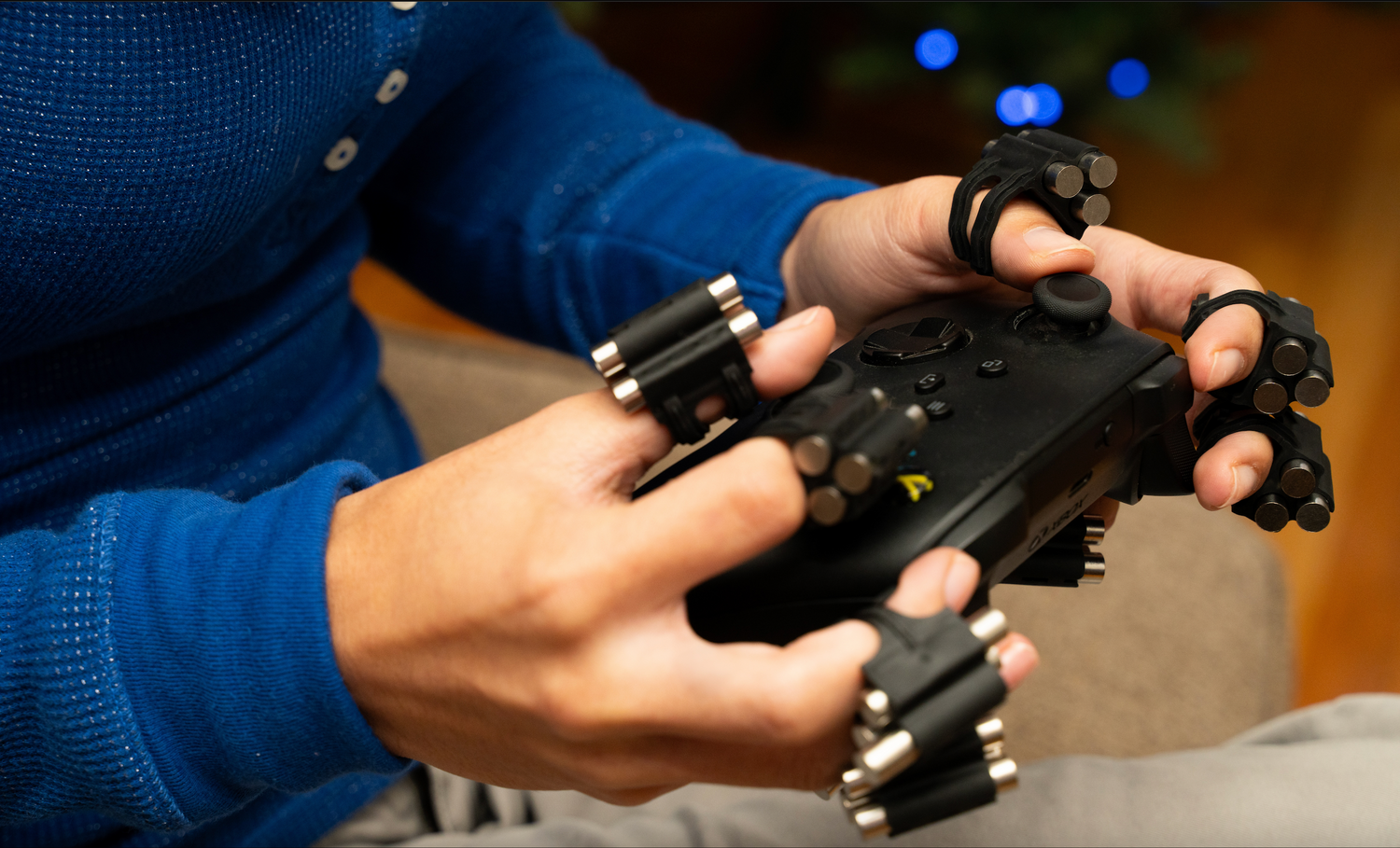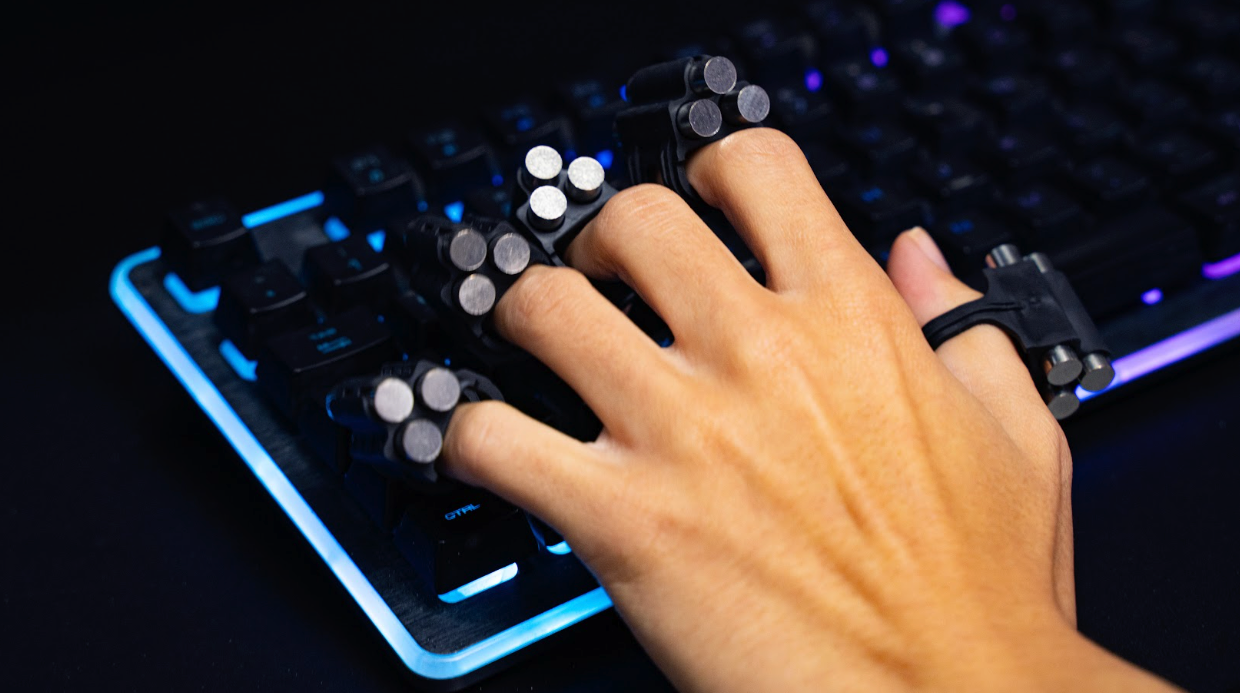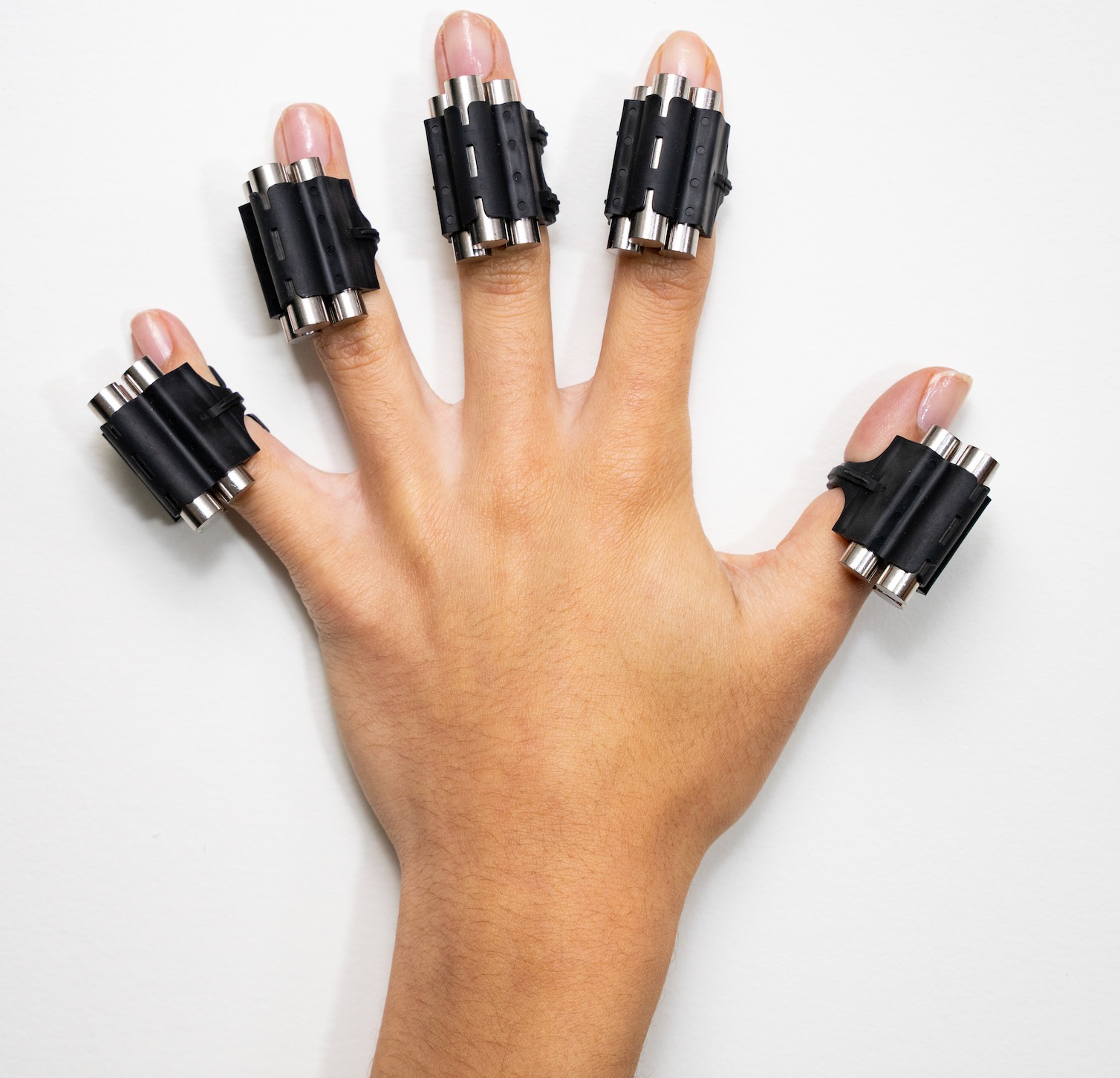FINGER & HAND TRAINING SYSTEM

IMPROVED FUNCTIONALITY
FingerWeights apply the basic principles of progressive resistance training as a means to increase gentle range of motion, endurance, flexibility, dexterity, precision, and overall strength. Unique in that they can be worn during users' chosen activity or as a stand-alone training device.
Finger & hand injuries requiring rehabilitation, Rheumatoid Arthritis sufferers, OTs / PTs, Musicians, Gamers... Anyone looking to improve finger performance!
FingerWeights
FingerWeights G2 5-SET
Share


WHAT MUSICIANS ARE SAYING...
"Bought these years ago for increasing speed and strength in my right (classical guitar) hand and they proved 'useful.' More recently I had surgery on both my hands, decided to dig them out of retirement, and glad I'm glad I did! Both hands were left weak post-op so using FingerWeights brought my near 'useless' hand back to health...Brilliant invention!"

LEVEL-UP!
Gamers and eSports professionals looking for an edge should be utilizing FingerWeights. Increased practice/playing time, increased actions per minute, can be worn while playing or as a stand-aone the positive effects can be felt after first use.
USERS

MEDICAL & HEALTH
FingerWeights apply the basic principles of progressive resistance training as a means to increase gentle range of motion, endurance, flexibility, dexterity, precision, and overall strength. Unique in that they also provide proprioceptive and kinesthetic input so the person can better sense the position, and movement, of their fingers.
Under the guidance of a healthcare professional, FingerWeights can be part of a therapeutic program to treat a number of disorders of the hands and fingers and as part of a post-surgical rehab program. People with stroke, carpal tunnel syndrome, arthritis, Parkinson’s Disease, and other medical conditions affecting finger strength, coordination, and proprioception can benefit from FingerWeights.
Training with FingerWeights WILL improve:
- Strength
- Endurance
- Dexterity
- Flexibility
- Precision
Resident OT
MUSICIANS
FingerWeights apply the basic principles of progressive resistance training as a means to increase gentle range of motion, endurance, flexibility, dexterity, precision, and overall strength. Both the Original and Flex models provide proprioceptive and kinesthetic input so the person can better sense the position of their fingers and the movement of their fingers.
Along with the more obvious health and wellness aspects, musicians of all levels and disciplines will also benefit from utilizing FingerWeights. Whether it's increased practice/playing time, or being able to reach certain chords, the positive effects can be felt after first use. Unique and
- Training with FingerWeights WILL improve:
- Endurance
- Strength
- Dexterity
- Flexibility
- Precision
- Training with FingerWeights WILL NOT:
- Increase Talent Level
- Increase Muscle Mass
- Make Fingers Feel Heavy Post-Use
HELPFUL LINKS:
Robert Schumann...Fact Vs. Fiction
GAMERS
Along with the more obvious health and wellness aspects, gamers and eSports professionals (the Modern Athlete) looking for that edge will also benefit from utilizing FingerWeights. Whether it's increased practice/playing time, or increased actions per minute, the positive effects can be felt after first use.
- Training with FingerWeights WILL improve:
- Endurance
- Strength
- Dexterity
- Flexibility
- Precision
- Training with FingerWeights WILL NOT:
- Increase Talent Level
- Increase Muscle Mass
- Make Fingers Feel Heavy Post-Use
ATHLETES
Along with the more obvious health and wellness aspects, athletes looking for that edge will also benefit from utilizing FingerWeights (Flex). Whether it's better ball control in baseball, or improved handles and shooting in basketball, FingerWeights hone in on the fine motor muscles in the fingers and hands to help maximize overall performance.
- Training with FingerWeights WILL improve:
- Endurance
- Strength
- Dexterity
- Flexibility
- Precision
- Training with FingerWeights WILL NOT:
- Increase Talent Level
- Increase Muscle Mass
- Make Fingers Feel Heavy Post-Use











